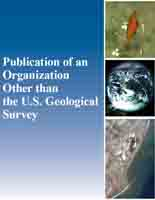Assessment of western Oregon debris-flow hazards in burned and unburned environments
Links
- More information: Publisher Index Page (via DOI)
- Open Access Version: Publisher Index Page
- Download citation as: RIS | Dublin Core
Abstract
In the steep and mountainous environment of western Oregon, debris flows pose a considerable threat to property, infrastructure and life. Wildfire is commonly known to increase the susceptibility of steep slopes to debris flows, but the extent of this process in the western Cascades is not well understood. The US Geological Survey (USGS) currently estimates postfire debris-flow likelihood and triggering rainfall thresholds using a model calibrated to a southern California inventory of debris flows generated by excess runoff within the first year after fire. Because of a lack of available data, this model has not been tested in western Oregon, or in locations where postfire debris flows initiate via other mechanisms (e.g., shallow landslides or in-channel failures). Using repeat field observations and aerial imagery, we developed two new debris-flow inventories within and adjacent to the perimeters of five 2020 wildfires in western Oregon: Archie Creek, Holiday Farm, Beachie Creek, Lionshead and Riverside. The first inventory focuses on postfire debris flows (2020–2022); the second focuses on debris flows prior to fires (1995–2020). Our inventories of prefire and postfire debris flows were used to document initiation mechanisms in Oregon's western Cascades and to evaluate the effects of wildfire. We found that wildfire changed the distribution of debris-flow initiation mechanisms in the western Cascades. After the wildfires, annual rates of runoff-generated debris flows increased by 22% and the number of shallow landslide-initiated debris flows decreased by 17% relative to before the wildfires. Despite this shift, shallow landsliding was the dominant debris-flow initiation mechanism in both unburned and burned environments. We found the performance of the current USGS debris-flow likelihood model was degraded relative to other previously tested locations across the intermountain western United States. Our results highlight the need for improved postfire hazard assessment in western Oregon based on regional model calibration that is tuned to the dominant debris-flow initiation mechanisms.
Study Area
| Publication type | Article |
|---|---|
| Publication Subtype | Journal Article |
| Title | Assessment of western Oregon debris-flow hazards in burned and unburned environments |
| Series title | Earth Surface Processes and Landforms |
| DOI | 10.1002/ESP.70045 |
| Volume | 50 |
| Issue | 4 |
| Publication Date | March 26, 2025 |
| Year Published | 2025 |
| Language | English |
| Publisher | Wiley |
| Contributing office(s) | Geologic Hazards Science Center - Landslides / Earthquake Geology |
| Description | e70045, 15 p. |
| Country | United States |
| State | Oregon |
| Other Geospatial | western Oregon |


